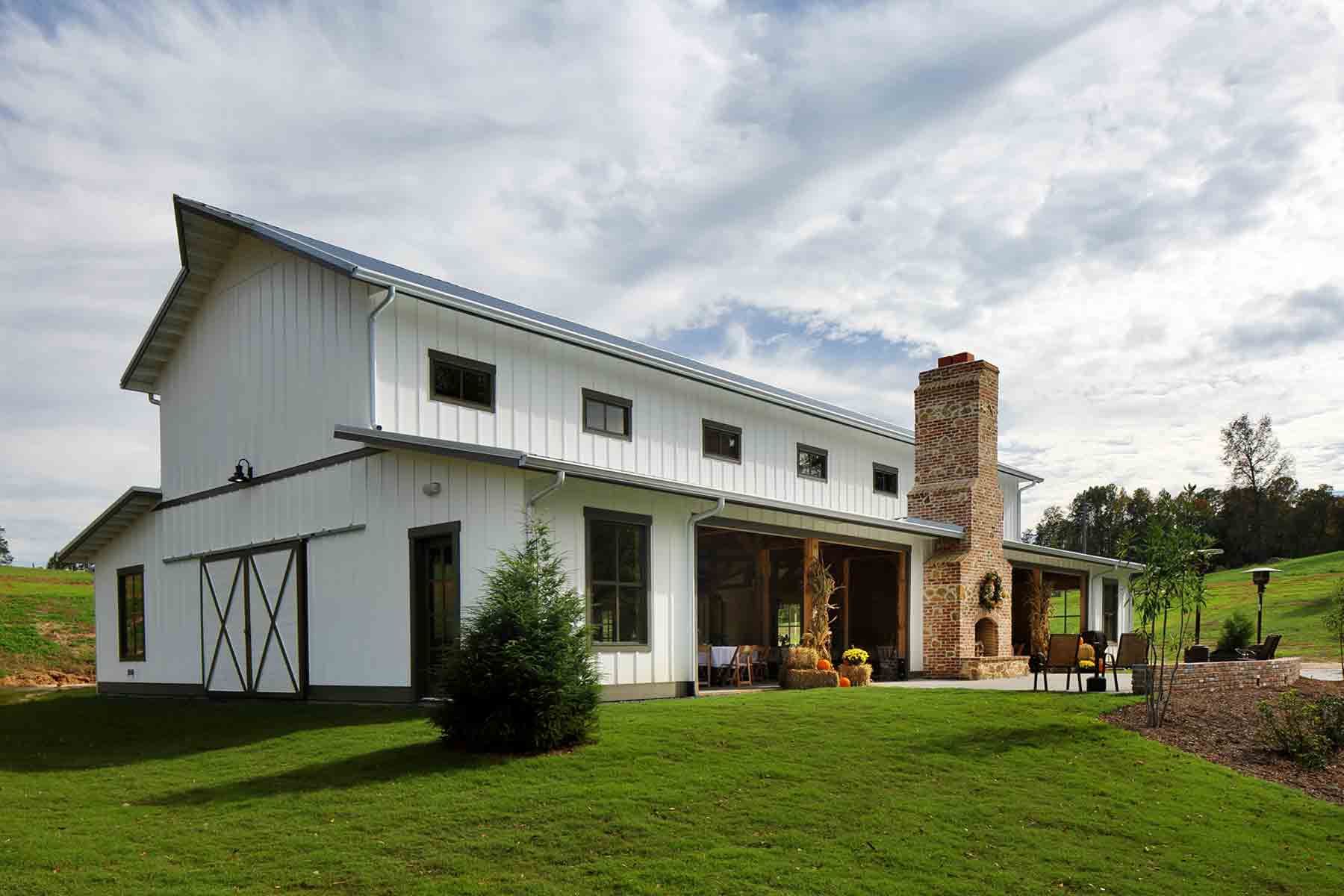Barndominiums Vs. Standard Homes: a Comprehensive Contrast of Way Of Living and Performance
The choice between barndominiums and typical homes includes various factors, including way of life preferences and useful requirements. Barndominiums are identified by their open formats and adaptability, usually attracting those who focus on public living and adaptability. In contrast, traditional homes offer an even more structured environment, which might better serve family members seeking privacy and a feeling of background. As we examine the expense effects and environmental considerations, it ends up being clear that the selection expands beyond mere visual appeals and functionality; it invites a much deeper exploration of what truly defines a home.
Summary of Barndominiums
Barndominiums, a novel housing trend getting appeal across various regions, blend the rustic appeal of barn-style architecture with the capability of modern home. These distinct frameworks normally contain a metal or timber structure, combining open layout and high ceilings with energy-efficient features. Commonly located on large rural properties, barndominiums supply house owners the opportunity to enjoy a calm lifestyle while supplying enough room for various activities.
The versatility of barndominiums extends past their visual appeal; they can act as both living quarters and useful areas for leisure activities, workshops, or even little services. Their flexible design enables very easy personalization, suiting varied family requirements and preferences. Numerous owners value the reduced maintenance needs connected with metal siding and roof covering, contributing to lasting toughness.

Qualities of Typical Homes
Emphasizing timeless design and comfort, conventional homes are identified by their distinctive building designs, which frequently mirror historical impacts and local visual appeals. Usual features consist of in proportion exteriors, gabled roofings, and an emphasis on craftsmanship, causing a cozy and welcoming ambience.
Typical homes often integrate aspects such as crown molding, wainscoting, and hardwood flooring, enhancing their classic charm. They typically include multiple spaces with defined objectives, advertising family members communication while enabling personal privacy. website. The format usually includes formal living and dining areas, which contribute to amusing guests and holding family members gatherings
Exterior products such as brick, wood, or stone are often utilized, adding to longevity and a sense of durability. Barndominium repair. Furthermore, several standard homes are designed with front patios or stoops, cultivating a sense of area and connection with the area
Landscape design plays a substantial function in traditional home layout, go to website with properly maintained gardens and pathways that boost visual allure - click here. In general, typical homes embody a feeling of fond memories and security, appealing to those that value heritage and a more structured living setting
Price Contrast
Commonly, an expense comparison between barndominiums and conventional homes discloses significant differences in construction expenses and general investment. Barndominiums, usually created from metal or steel frames, usually sustain reduced material and labor expenses than typical homes built from wood and brick. The streamlined style of barndominiums can equate to reduced construction times, additionally decreasing labor prices and accelerating tenancy.
On standard, the price per square foot for a barndominium varies from $100 to $150, while typical homes can differ widely, usually dropping between $150 and $300 per square foot, relying on area, materials, and style complexity. This expense disparity makes barndominiums an eye-catching choice for budget-conscious customers seeking bigger space without giving up top quality.
In addition, barndominiums may cause long-term cost savings via lower upkeep expenses, energy effectiveness, and insurance prices. Their long lasting building and construction materials commonly require less maintenance in time compared to conventional homes. It is vital to consider that while first costs might be lower for barndominiums, the final investment will likewise depend on private modification and wanted facilities, which can affect the total cost in both housing types.
Lifestyle and Space Factors To Consider
When considering way of living and area, barndominiums use a distinct adaptability that interest a range of homeowners. These hybrid frameworks incorporate property living with useful space, usually including open floor plans that can be adjusted to suit individual requirements. This adaptability is especially advantageous for family members or people seeking a tailored living atmosphere, permitting for varied usages such as home offices, workshops, or recreational areas.

In addition, the aesthetic appeal of barndominiums can satisfy both rustic and contemporary tastes, making them a versatile selection for different design choices (Barndominium repair). Inevitably, the selection between a barndominium and a conventional home commonly rests on how well each alternative lines up with the home owner's lifestyle goals and spatial demands, highlighting the significance of thinking about individual priorities in the decision-making procedure
Environmental Influence and Sustainability
The environmental effect and sustainability of barndominiums existing compelling advantages contrasted to conventional homes. Primarily built from steel and other resilient products, barndominiums are often developed using recycled sources, lowering the need for new products and decreasing waste. Their design usually highlights open spaces, which can lead to lower energy intake for cooling and heating compared to conventional homes with more fractional formats.
In addition, barndominiums can include lasting features such as photovoltaic panels, rainwater harvesting systems, and advanced insulation strategies, boosting their power performance. The flexibility of their style allows property owners to integrate these technologies a lot more seamlessly than in lots of traditional homes, which might need extensive retrofitting.
Furthermore, barndominiums usually need fewer resources for building due to their simpler, a lot more effective designs. This not just decreases the carbon footprint linked with building yet additionally adds to an extra lasting way of living. In comparison, standard homes may entail greater levels of energy expense and resource make use of throughout their lifecycle, from building and construction to upkeep. Generally, barndominiums stand for a forward-thinking approach to lasting living, aligning with contemporary environmental top priorities.
Verdict
In summary, the choice between barndominiums and standard homes pivots on specific way of living choices and useful needs. Barndominiums, with their open layouts and sustainable materials, provide to those looking for flexibility and communal living.